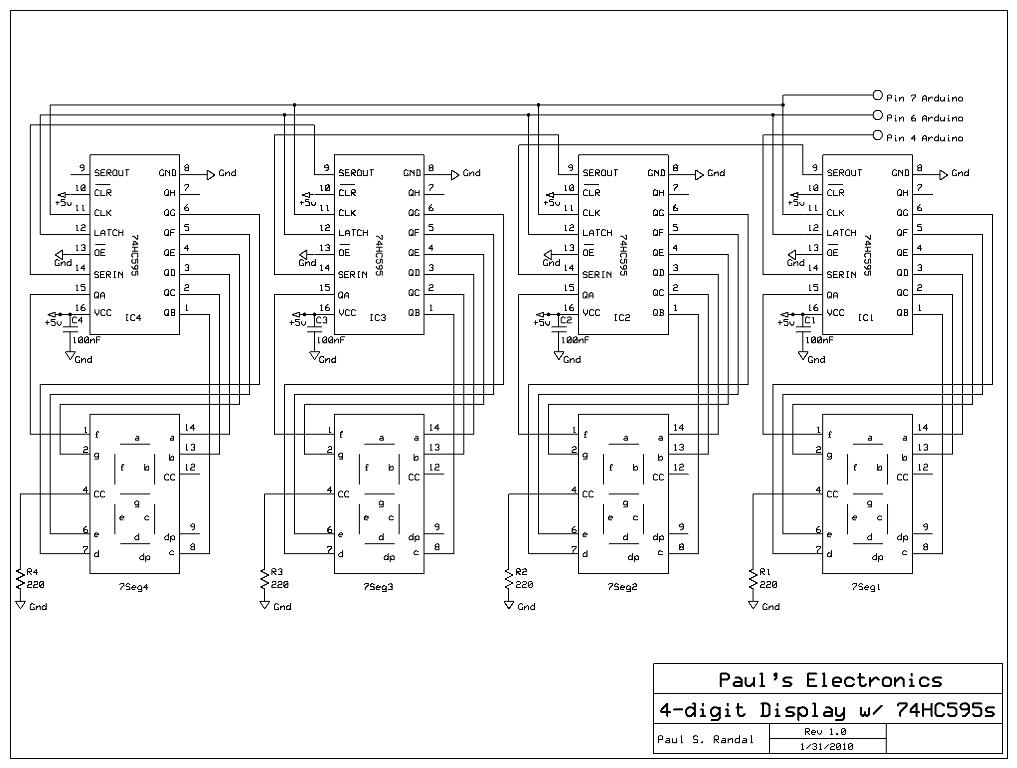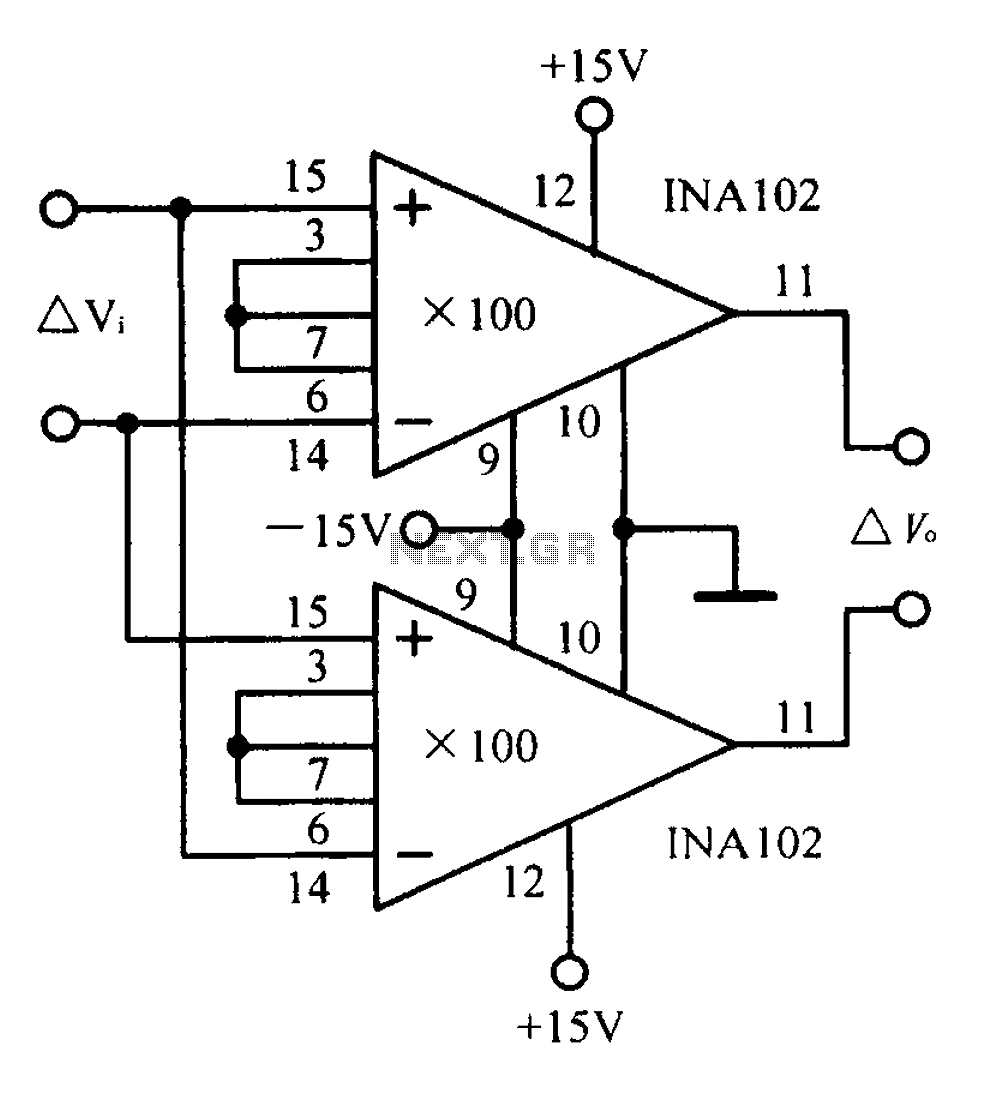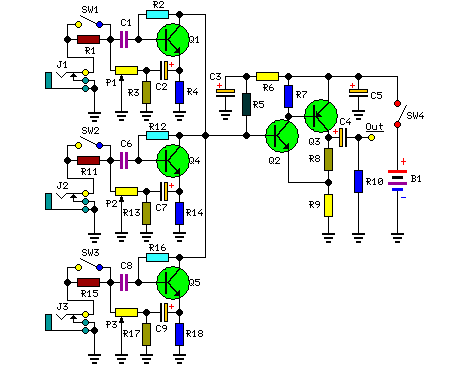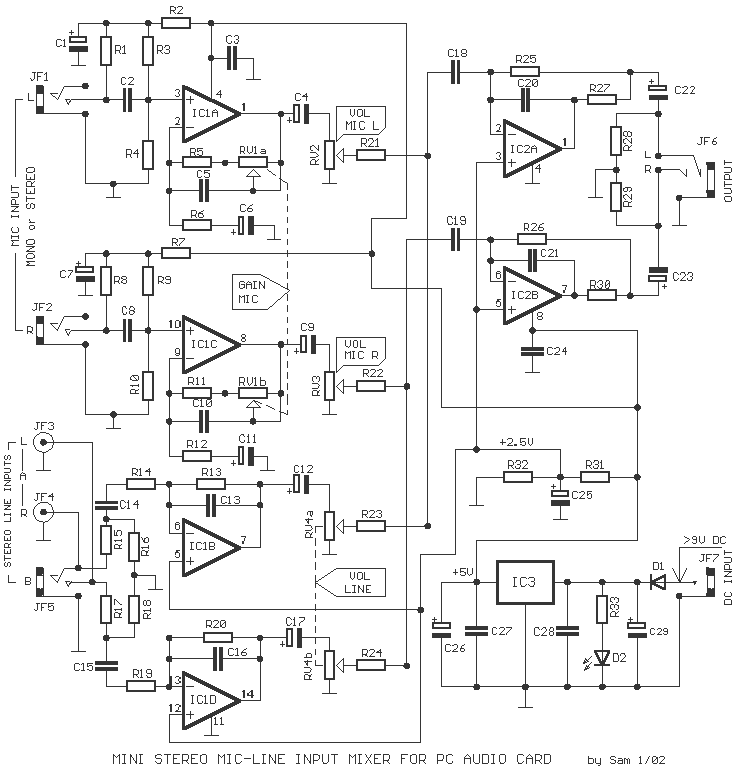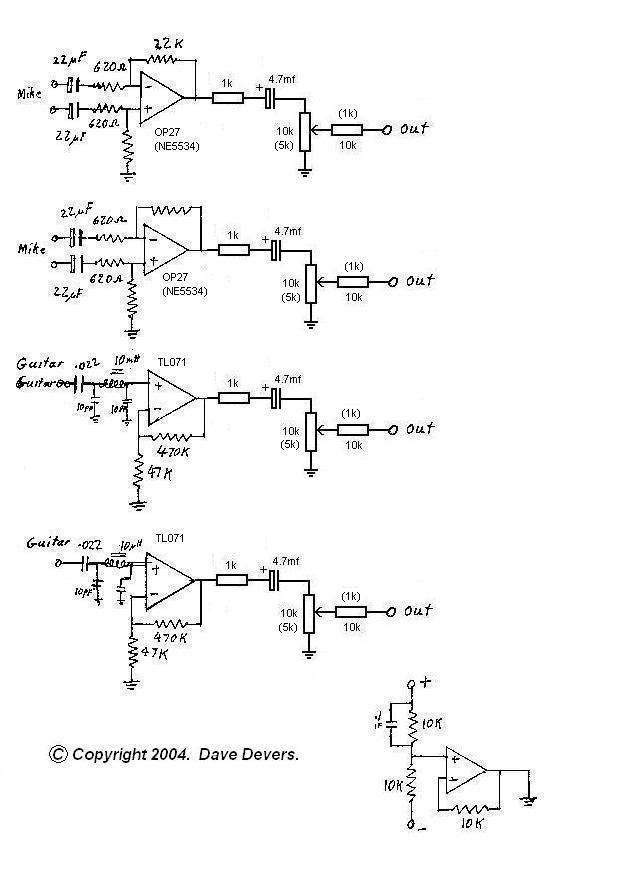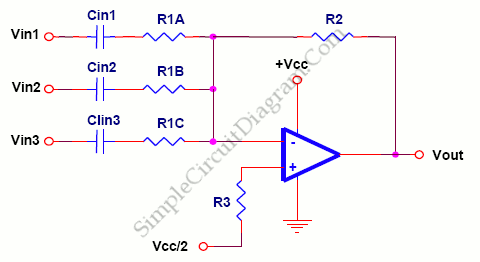
6 Input Mixer
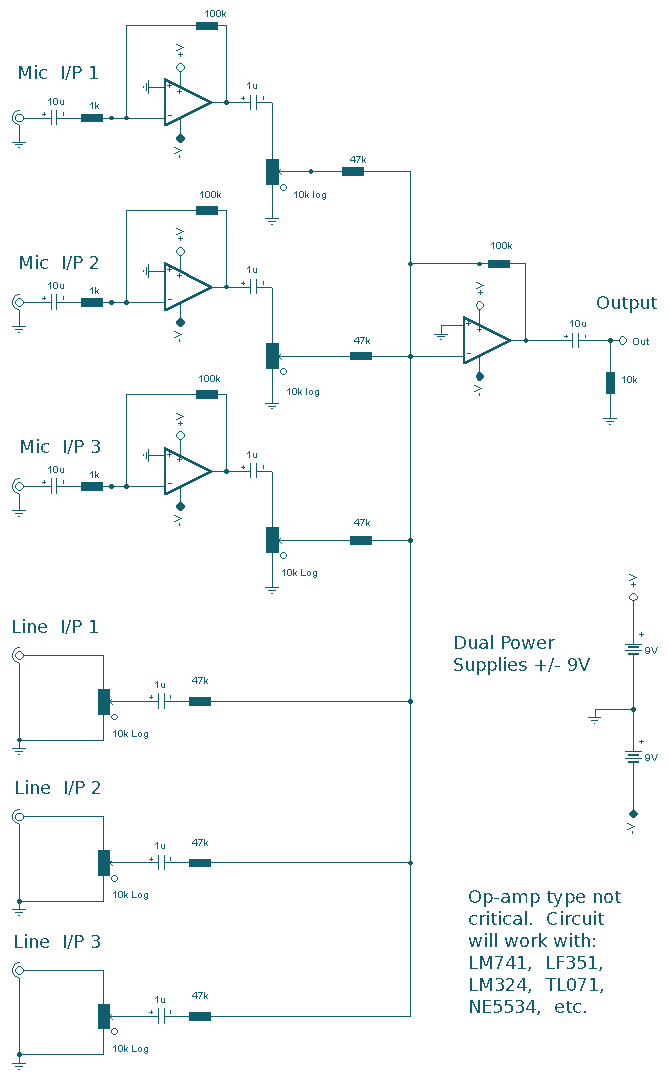
The mixer circuit below has 3 line inputs and 3 mic inputs. The mic inputs are suitable for low impedance 200-1000R dynamic microphones. An ECM or condenser mic can also be used, but must have bias applied via a series resistor. As with any mixer circuit, a slight loss is always introduced. The final summing amplifier has a gain of 2 or 6dB to overcome this. The Input line level should be around 200mV RMS. The mic inputs are amplified about 100 times or by 40dB, the total gain with the mixer is 46dB. The mic input is designed for microphones with outputs of about 2mV RMS at 1 meter. Most microphones meet this standard.
The mixer circuit described incorporates three line-level inputs and three microphone inputs, allowing for versatile audio mixing capabilities. The microphone inputs are tailored for low-impedance dynamic microphones, specifically designed to accommodate a range of 200 to 1000 ohms. For condenser microphones, also known as ECMs, a bias voltage is necessary, which can be supplied through a series resistor to ensure proper operation.
In terms of signal processing, the circuit is engineered to handle a nominal input line level of approximately 200 mV RMS. The microphone inputs are particularly sensitive, providing an amplification factor of around 100 times, equivalent to 40 dB. This high level of gain is essential for effectively processing microphones that typically output around 2 mV RMS at a distance of 1 meter, ensuring compatibility with standard microphone specifications.
Despite the inherent gain provided by the microphone inputs, it is important to note that any mixer circuit will introduce some degree of signal loss. To counteract this loss, the final summing amplifier stage is configured to deliver an additional gain of either 2 or 6 dB, thus optimizing the overall output level of the mixed audio signals. The total gain achievable with this mixer circuit reaches up to 46 dB, making it suitable for a variety of audio applications where multiple sources need to be combined into a single output.
Overall, this mixer circuit design is well-suited for both live sound reinforcement and studio recording environments, providing a robust solution for handling multiple audio inputs with varying characteristics.The mixer circuit below has 3 line inputs and 3 mic inputs. The mic inputs are suitable for low impedance 200-1000R dynamic microphones. An ECM or condenser mic can also be used, but must have bias applied via a series resistor. As with any mixer circuit, a slight loss is always introduced. The final summing amplifier has a gain of 2 or 6dB to overcome this. The Input line level should be around 200mV RMS. The mic inputs are amplified about 100 times or by 40dB, the total gain with the mixer is 46dB. The mic input is designed for microphones with outputs of about 2mV RMS at 1 meter. Most microphones meet this standard. 🔗 External reference
The mixer circuit described incorporates three line-level inputs and three microphone inputs, allowing for versatile audio mixing capabilities. The microphone inputs are tailored for low-impedance dynamic microphones, specifically designed to accommodate a range of 200 to 1000 ohms. For condenser microphones, also known as ECMs, a bias voltage is necessary, which can be supplied through a series resistor to ensure proper operation.
In terms of signal processing, the circuit is engineered to handle a nominal input line level of approximately 200 mV RMS. The microphone inputs are particularly sensitive, providing an amplification factor of around 100 times, equivalent to 40 dB. This high level of gain is essential for effectively processing microphones that typically output around 2 mV RMS at a distance of 1 meter, ensuring compatibility with standard microphone specifications.
Despite the inherent gain provided by the microphone inputs, it is important to note that any mixer circuit will introduce some degree of signal loss. To counteract this loss, the final summing amplifier stage is configured to deliver an additional gain of either 2 or 6 dB, thus optimizing the overall output level of the mixed audio signals. The total gain achievable with this mixer circuit reaches up to 46 dB, making it suitable for a variety of audio applications where multiple sources need to be combined into a single output.
Overall, this mixer circuit design is well-suited for both live sound reinforcement and studio recording environments, providing a robust solution for handling multiple audio inputs with varying characteristics.The mixer circuit below has 3 line inputs and 3 mic inputs. The mic inputs are suitable for low impedance 200-1000R dynamic microphones. An ECM or condenser mic can also be used, but must have bias applied via a series resistor. As with any mixer circuit, a slight loss is always introduced. The final summing amplifier has a gain of 2 or 6dB to overcome this. The Input line level should be around 200mV RMS. The mic inputs are amplified about 100 times or by 40dB, the total gain with the mixer is 46dB. The mic input is designed for microphones with outputs of about 2mV RMS at 1 meter. Most microphones meet this standard. 🔗 External reference
Warning: include(partials/cookie-banner.php): Failed to open stream: Permission denied in /var/www/html/nextgr/view-circuit.php on line 713
Warning: include(): Failed opening 'partials/cookie-banner.php' for inclusion (include_path='.:/usr/share/php') in /var/www/html/nextgr/view-circuit.php on line 713
